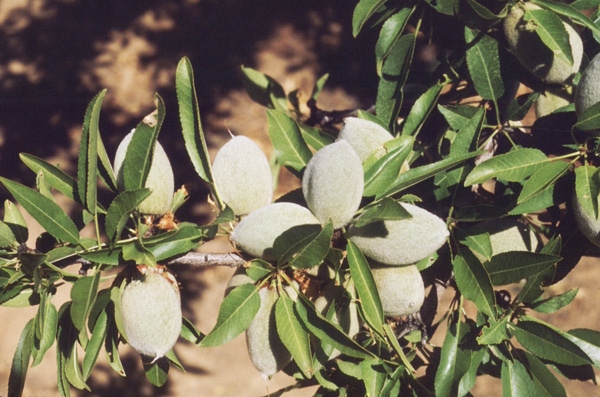May 18, 2016

A relatively wet winter has spawned the growth of weeds in almond orchards this year, but at the same time it has helped with the effectiveness of pre-emergent herbicides driven into the soil by the falling rain.
That’s the observation of Brad Hanson, a University of California (UC) Extension weed specialist, who recommends a resistance management weed control program that blends pre- and post-emergent control for winter weeds and summer grasses.
His basic thesis is that growers – without spending more to do so – can better control summer weeds by tweaking passes they already make across the field while applying herbicides.
And Kurt Hembree, UC farm advisor for Fresno County, has offered tips on controlling summer weeds as well.
Hembree said growers should look at whether new weeds are emerging and then select herbicides accordingly. This can vary from field-to-field, he said, and herbicides should be selected based on soil types.
“Lower rates of pre-emergent products are often needed on sandier soils than heavier soils,” he said.
Hanson said junglerice has joined the list of weeds that are herbicide resistant, including horseweed, fleabane, and ryegrass.
Tank mixing different classes of chemistry to control winter weeds is a good strategy to broaden the weed control spectrum, Hanson said, but it does not necessarily enhance the duration of the application’s efficacy.
He said junglerice is among annual weeds that typically germinate and emerge as the season warms in late spring and early summer.
Other examples of confirmed or suspected glyphosate-resistant summer weeds include threespike, goosegrass, feather fingergrass, sprangletop, and witchgrass. Those problem weeds emerge long after typical orchard per-emergent herbicides are applied.
He said growers with a history of summer grasses might want to consider extending residual control by using sequential applications of pre-emergent grass herbicides added to the winter pre and post-emergent tank mix and again at spring burndown.
For example: In a typical weed management program, the pre-emergent may be added in winter, perhaps in late February or March. But if the grower has issues with summer grasses, use part of the pre-emergent in the spring.
“Not just glyphosate, but Prowl or Surflan,” Hanson said. “Think of it as a booster shot in the spring,” he said, as residual effects of pre-emergents decline.
“I’m proposing this as an idea; not a recipe,” he said. “The answer is not always more but better use, using the tools when we need them, and getting the most bang for the buck.
To take his example further, if a grower uses four quarts of Prowl in January, perhaps they use two quarts for the winter application and two in March.
“There’s not an extra cost,” Hanson said. “Maybe it’s two quarts and three, depending on weed pressure.”
For the pre-emergent to be effective, it must travel to the top half inch or inch of soil. And it is moisture that drives it down. When it’s there, the seedling dies as it stops the root growth.
Hanson acknowledged that the incorporation of pre-emergents can be an issue in a drip-irrigated orchard. He recommends growers time applications in advance of a rain in early March.
“I think the cost should be nominal because we are moving the same herbicide to a time when growers are already making a pass across the field,” Hanson said.
“We are not necessarily increasing the herbicide load with this strategy, but instead are using our knowledge about the specific weed problems present in an orchard and careful management to efficiently control weeds in a more environmental and economically sustainable approach.”
As to increased rainfall and challenges this year, Hanson said, “We won’t be challenged beyond our capabilities.”
Hanson said good burndown programs are essential, and heavy weed pressure may take several years to clean up. He strongly advocates using chemicals with varying modes of action to avoid developing resistance to sprays.
Young trees are particularly vulnerable to weed pressures, he said, partly since there are not as many herbicides registered for use on those trees.
Hanson said the biggest problem posed by weeds in almonds is interference with harvest operations. Machinery must sweep up nuts off the orchard floor, and clumps of weeds impede this.
In one scenario, Hanson said a typical sequential herbicide program might have a post-harvest burndown in October or November. This would be followed with a pre- and post-emergent tank mix using broad spectrum chemicals that include Alion, Pindar GT, Chateau, and Matrix at two quarts per acre in December or January. Then, along with the spring burndown in March or April, add Prowl or Surflan at perhaps two quarts per acre for the March.
The pre-harvest pass comes in June, July, or August. It may be done for burndown only, but it can combine the use of a short residual, perhaps pairing glyphosate with an oxyfluoren product such as Goal.
Hembree said adding Treevix or Rely 280, Lifeline, or similar products to complement Roundup have proven effective on a wide variety of weeds.
“Be sure to treat when the weeds are small for optimum control,” he adds.
You May Also Like




